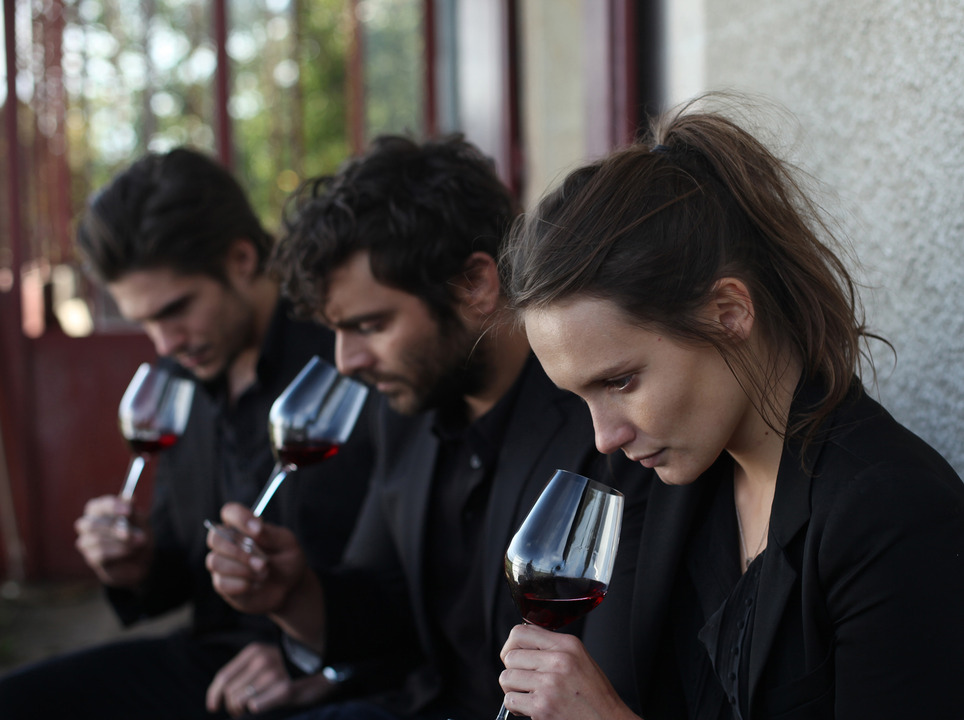 Image courtesy of France Channel, “Back to Burgundy,” (2017)
Image courtesy of France Channel, “Back to Burgundy,” (2017)
Buying a French wine can feel less like shopping and more like deciphering a medieval manuscript. Where a Californian bottle might cheerfully announce “Cabernet Sauvignon, 2020,” its French counterpart is likely to greet you with an austere place name, a date, and a scattering of cryptic phrases. To the uninitiated, it borders on unfriendly. But to the French, these labels are not simply descriptions — they are miniature archives of geography, law, and cultural memory.
The Geography as Protagonist
In France, the hero of the label is rarely the grape itself. Instead, it is the terroir — that elusive combination of soil, slope, climate, and local know-how. This is why a bottle proclaims “Bourgogne” rather than “Pinot Noir,” or “Chablis” instead of “Chardonnay.” Grapes are fungible; places are eternal. A Burgundian grower might argue that to say Pinot Noir without specifying the plot of land it came from is like saying “dog” without noting whether it’s a pampered Parisian poodle or a mountain shepherd’s working hound.
AOC: Bureaucracy as Cultural Memory
The Appellation d’Origine Contrôlée (AOC) system, established in 1935, is the French state’s way of bottling history. It regulates which grapes can be planted where, how much wine can be produced, and even methods of pruning. On the surface, it looks like bureaucracy; in practice, it functions as an official script of tradition. A label that says Châteauneuf-du-Pape AOC carries with it centuries of papal history, Rhône viticulture, and even local superstition — one regulation, still honored today, bans flying saucers from landing in vineyards (a curious Cold War-era ordinance more symbolic than practical).
The Poetry of Phrases
French labels are full of terms that border on the poetic. Vieilles Vignes (“old vines”) is not legally defined, but when a winemaker uses it, the implication is reverence: these vines are elders, seasoned storytellers of the soil. Premier Cru and Grand Cru sound like exalted ranks from an aristocratic order, and in a sense they are — hierarchies established by monks and landowners to signal the relative nobility of their plots. Even the humble phrase Mis en Bouteille au Château (“bottled at the estate”) is a small flex, a reminder that the wine did not wander off to some anonymous factory but stayed close to its roots.
Anecdotes in the Margins
Consider the word Clos, often appearing before the name of a vineyard. It literally means “enclosed,” harking back to the stone walls monks built around their prized plots in Burgundy to protect them from thieves, animals, and perhaps divine jealousy. Or take Romanée-Conti, one of the world’s most celebrated vineyards: its name fuses medieval land tenure (Romanée) with the 18th-century Prince de Conti, who famously refused to share his wine with anyone but his mistress. On a French label, gossip and geology coexist side by side.
Why the Puzzle Endures
For outsiders, French wine terminology can feel frustratingly opaque. But this opacity is precisely the point: the label is less an ingredient list than a cultural riddle, inviting you to learn its codes. Deciphering a bottle is like eavesdropping on an old conversation between land, law, and lineage. Each phrase, whether bureaucratic (AOC), poetic (Vieilles Vignes), or anecdotal (Clos), is part of a long chain of continuity — a reminder that in France, wine is not just consumed, it is narrated.